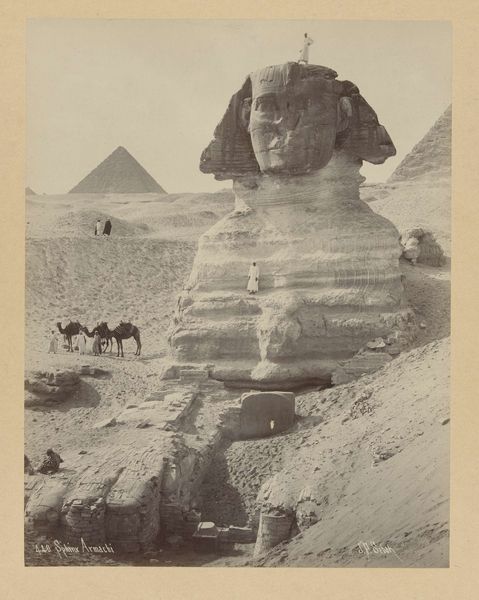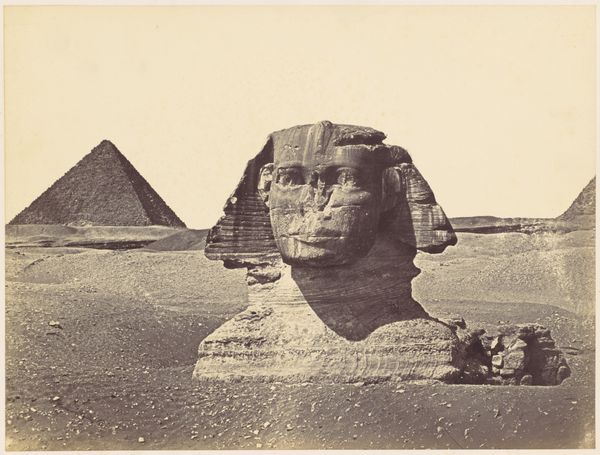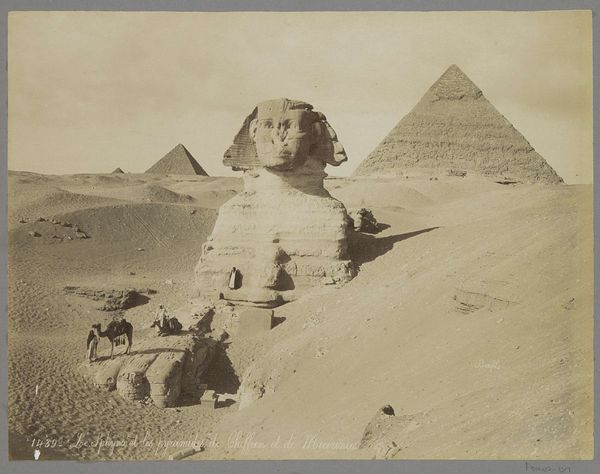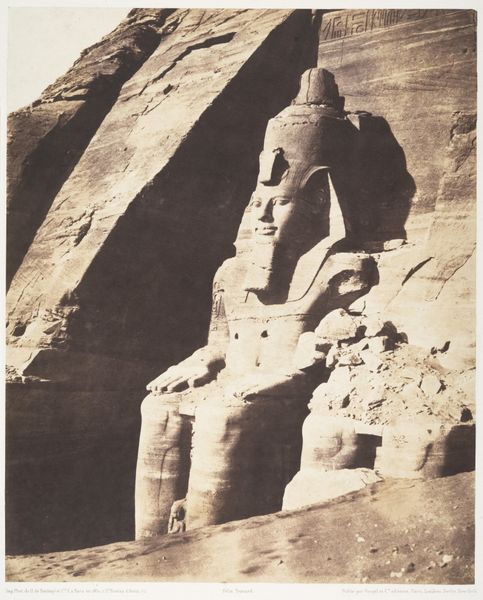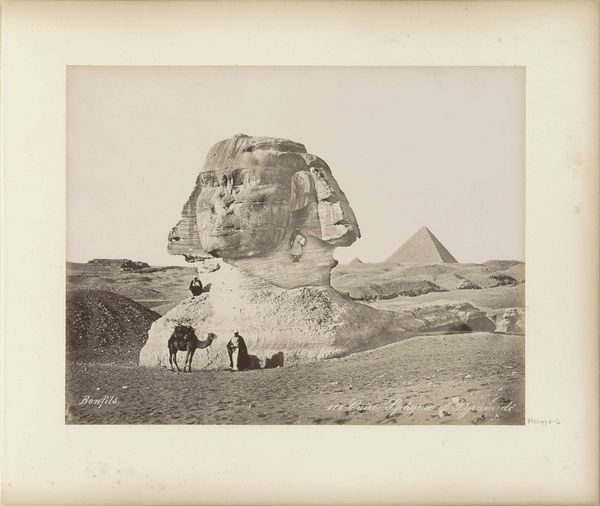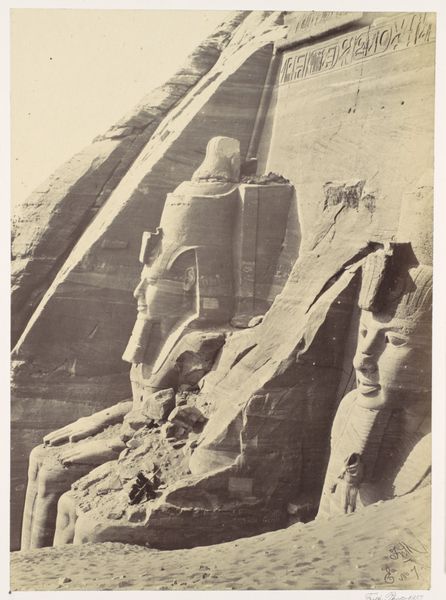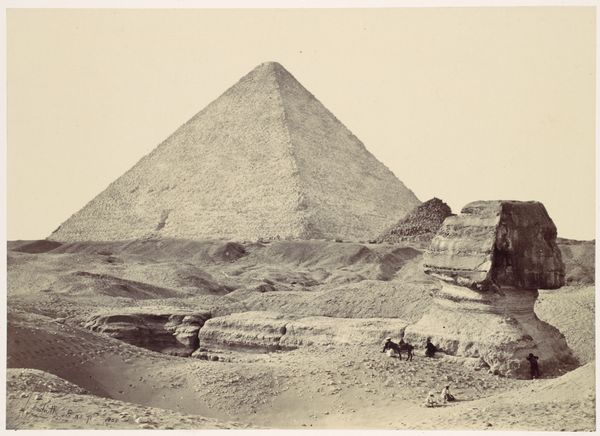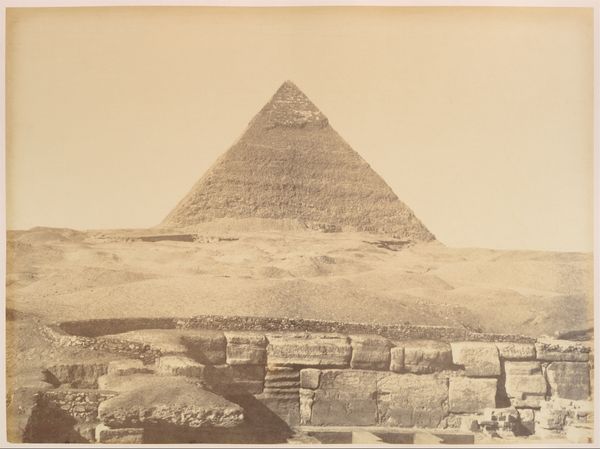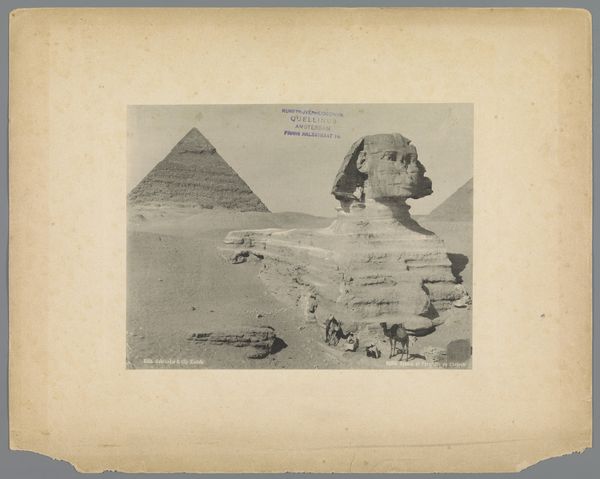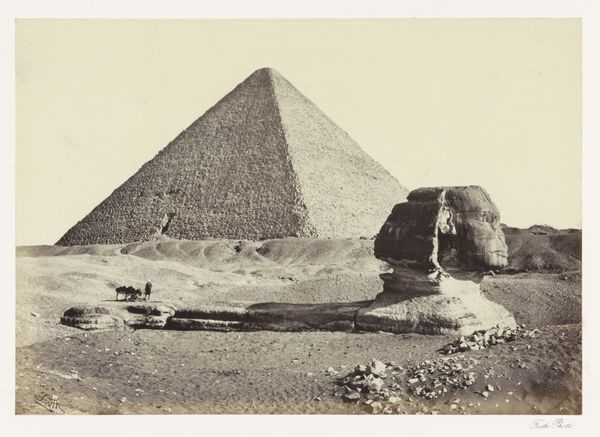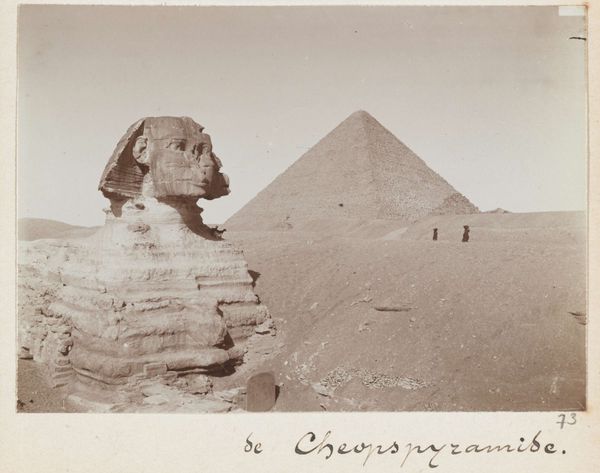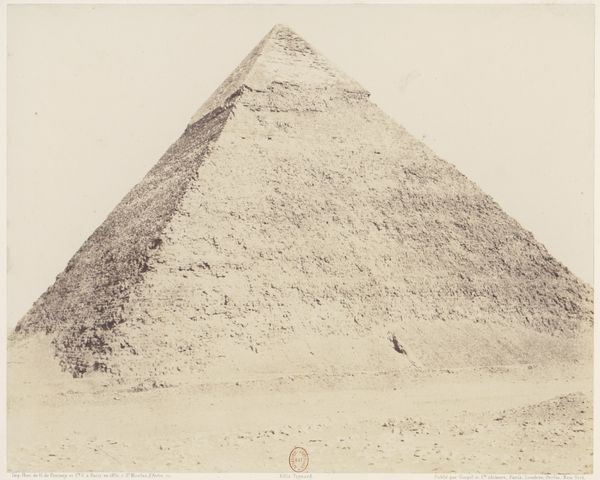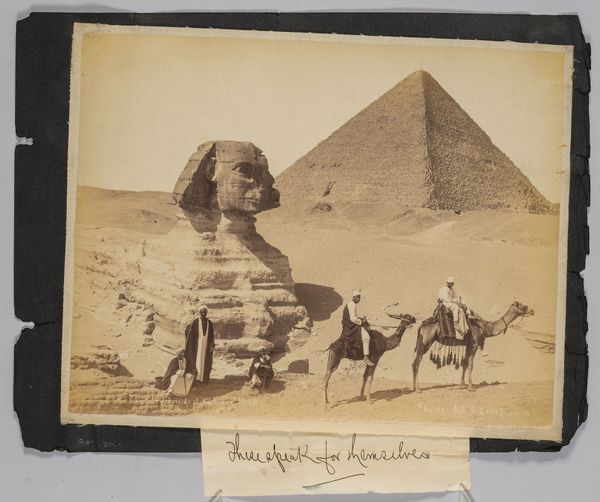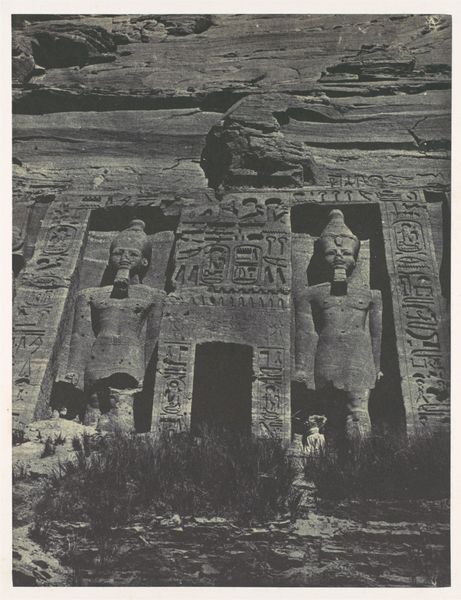
photography
#
landscape
#
ancient-egyptian-art
#
photography
#
ancient-mediterranean
#
cityscape
Dimensions: height 276 mm, width 220 mm
Copyright: Rijks Museum: Open Domain
Curator: I'm struck by the desolate beauty of this photograph. There’s something inherently melancholic about it. Editor: That feeling is potent, especially knowing the image captures the Great Sphinx of Giza, and is attributed to C. & G. Zangaki, taken sometime between 1880 and 1900. What draws me in is this tension between its intended symbolic representation, contrasted with the imperialistic gaze. Curator: Absolutely, its setting amplifies that feeling! Note how the photographer chose to highlight the Sphinx amid its environment; it’s not just an isolated monument but embedded within a larger historical landscape. Editor: I agree. The composition is meticulously structured. I'm drawn to that solitary figure perched atop the Sphinx. On one level, the image underscores humanity's relationship with this monumental sculpture. But consider also the power dynamic: the human asserting dominion over an ancient symbol. Curator: The positioning definitely shapes how we consider this subject. The photograph not only documents the Sphinx but, subtly, our perception and perhaps even exploitation of the monument itself. Editor: And that gets to the heart of so much Orientalist photography of that time. Who is controlling the narrative, and what purpose does that narrative serve? We see the pyramids in the background as another potent symbol of cultural domination of Western photographers seeking to confirm Europe’s perceived place at the top of the world hierarchy. Curator: In my mind, what resonates is this tension between the image as a factual representation and the photograph as a medium that inevitably involves subjective interpretation. It's an uncanny fusion, a silent interplay. Editor: Very true, the image presents the ancient world to a modern audience while the pyramids exist as historical evidence and markers. It also prompts a broader investigation into historical, cultural, and even sociopolitical implications. Curator: Agreed, viewing images such as this certainly requires us to reflect on their layered meanings, recognizing them as relics of cultural fascination and sociopolitical agendas.
Comments
No comments
Be the first to comment and join the conversation on the ultimate creative platform.
